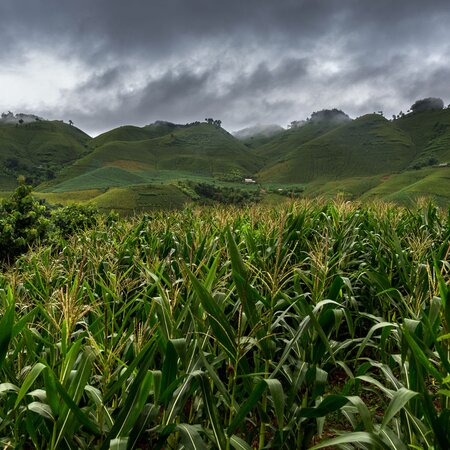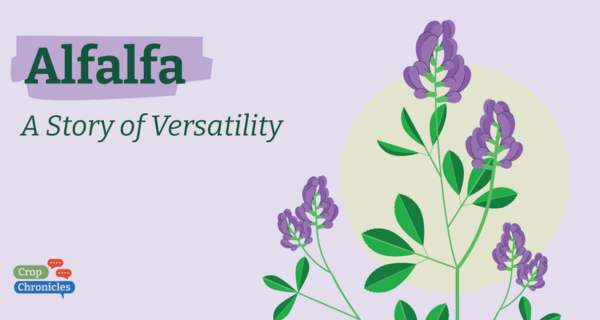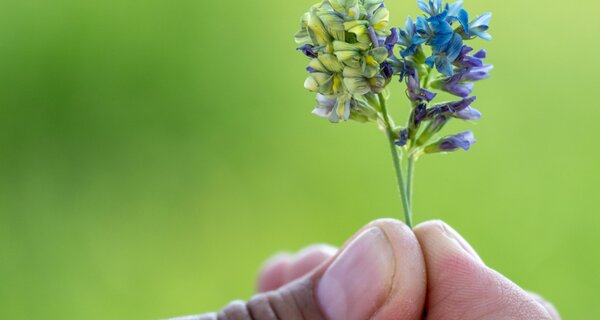Kauke Alfalfa Gives Farmers’ Livelihoods a Boost in Chile’s Central Valley
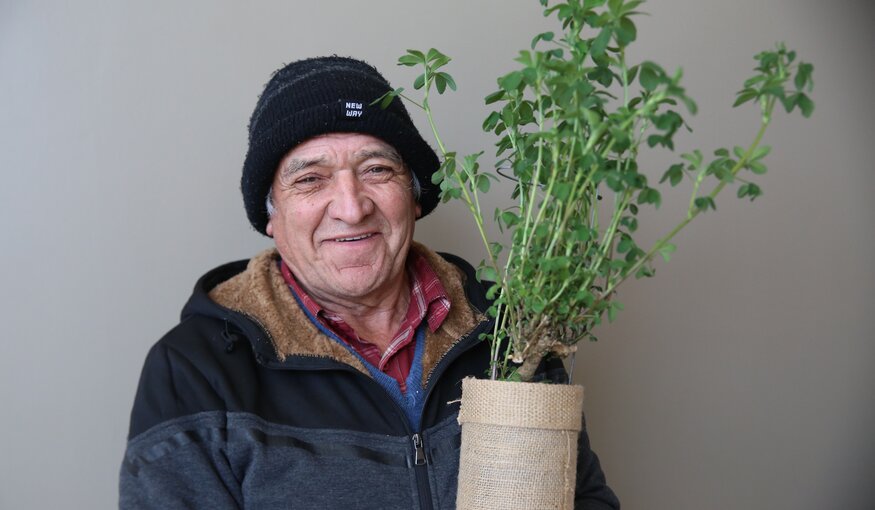
Juan Luis Acuña Fernandez, farmer from Chile’s Ñuble region.
23 August 2024
“It produced tremendous amounts, beyond my expectations, especially during the summer months, when nothing else grows. So, I cut the alfalfa and stored it away to feed my horses during those harsh months.”
Juan Luis Acuña Fernandez, a farmer from Chile’s Ñuble region, is talking about Kauke, a new variety of climate-resilient alfalfa perfectly tailored to the needs of smallholders.
For the thousands of farmers like Juan Luis, breeding livestock in an already arid region of Chile while battling increasingly erratic dry months, Kauke would have sounded too good to be true just a few years ago.
But all good things take time. In June 2024, thanks to an international collaboration of scientists, plant breeders and farmers, Kauke was released by Chile’s Institute of Agricultural Research (INIA) to provide climate-smart options for fodder in drought-prone and rainfall-dependent agricultural systems.
“Chilean agronomists are taught that alfalfa only grows under irrigated conditions and in the best, most fertile soils,” says Luis Inostroza, the INIA researcher who led the evaluation and release of Kauke. “We are now bringing alfalfa to dryland conditions – where farmers depend on rainfed agriculture – to grow it in places where it must endure between three to six months of drought and to produce forage in a period when no other species in Chile’s dry Mediterranean region can grow.”
Meet Kauke
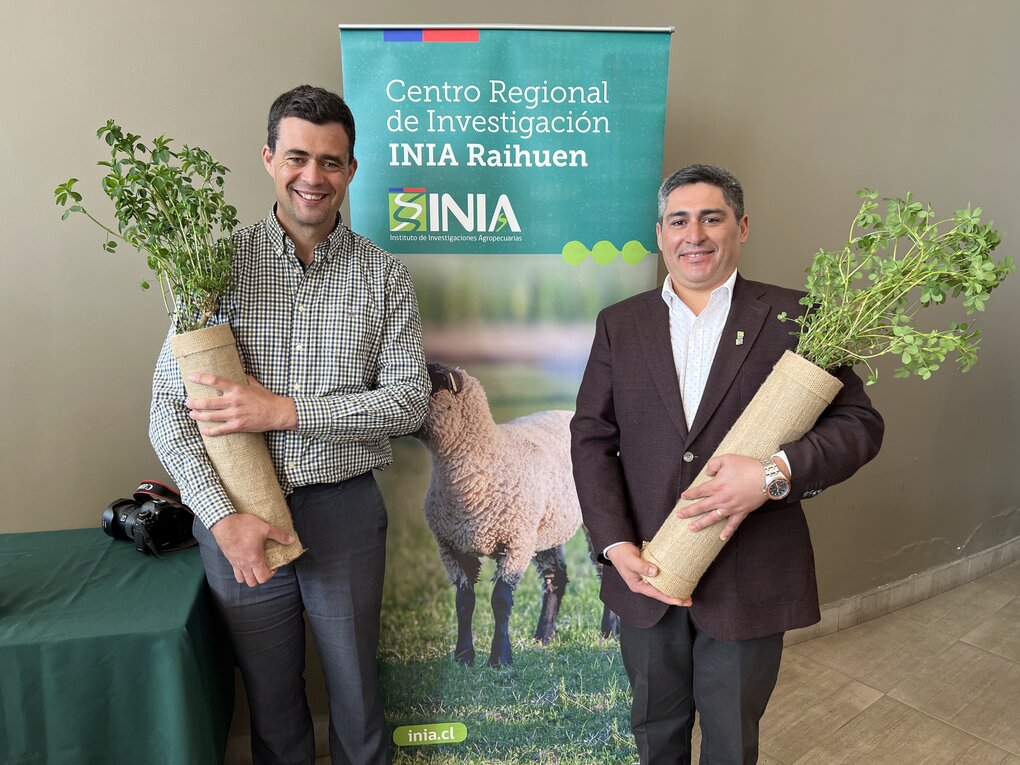
Alan Humphries, South Australian Research and Development Institute (SARDI) and Luis Inostroza, Chile's Institute of Agricultural Research (INIA), hold samples of the first-ever alfalfa to be developed in Chile, Kauke.
Kauke is the first-ever alfalfa variety released in Chile for rainfed environments. Its name – put forth by Celerino Quezada, one of Luis Inostroza's former university professors – comes from the word Cauquenes, the town where the scientists’ center of operation is located. The word means rigor, sacrifice and perseverance—apt descriptions for a place where agriculture is anything but easy.
After years in development, Kauke was released at an event hosted at Talca University by INIA, which led to trials to test and find the right variety of alfalfa. Partner organizations in attendance included the Crop Trust, the South Australian Research and Development Institute (SARDI) and the National Agricultural Technology Institute (INTA) of Argentina.
Kauke needs little rain and can grow for several years. In Chile, farmers use it mostly for hay: to feed their livestock during the lean months. Compared with commercial varieties of alfalfa, the new hybrid produces 30 percent more forage.
It grows quickly with the first rains and, at the end of the season, extends the production time for a few weeks, which makes a big difference in farmers’ lives.
Years in the Making

June 2024. Chile's Institute of Agricultural Research (INIA) announces the release of Kauke, the first-ever alfalfa to be developed in Chile, at the Universidad de Talca. Speakers, from L to R: Alejandro del Pozo, Viviana Barahona, Carlos Ovalle, Alan Humphries (South Australian Research and Development Institute), Daniel Basigalup (National Agricultural Technology Institute INTA), and Luis Inostroza.
Scientists used a method called pre-breeding to identify and introduce novel traits that make crops more resilient to the effects of climate change. This involves tapping into the massive genetic pool that is represented by the wild relatives of cultivated crops—their second or third cousins removed that have survived in the wild—to generate new varieties with resilient qualities, such as drought tolerance and disease resistance.
Kauke is the culmination of nearly a decade of research that started with the Crop Trust’s Crop Wild Relatives (CWR) Project back in 2015. Financed by the Norwegian Agency for Development Cooperation (NORAD), the CWR Project funded pre-breeding initiatives for 16 crops, including one forage crop: alfalfa.
Under the CWR Project, Alan Humphries of SARDI scoured genebanks around the globe to put together a core collection of alfalfa accessions representing extremes of adaptation from 18 countries, and then developed alfalfa pre-breeding lines from this material targeting climate change adaptation. This germplasm pool provided the main foundation for Kauke’s development.
When the CWR Project ended in 2022, INIA continued evaluating the alfalfa wild relative lines with support from the Chilean Foundation for Agricultural Innovation (FIA), providing further evidence to release Kauke.
The hybrid is the result of crossing alfalfa (Medicago sativa) and Medicago arborea—a long-lived shrub adapted to Mediterranean environments—and was first crossed by Edwin Bingham, from the University of Wisconsin, Madison.
“The past has shown that it can take 20 or 30 years to integrate and do enough crossing to remove the wild genes that you don't want,” Humphries says. “So, to have a successful brand-new hybrid from Day 1—that's a big surprise.”
Seeds of Self-Sufficiency
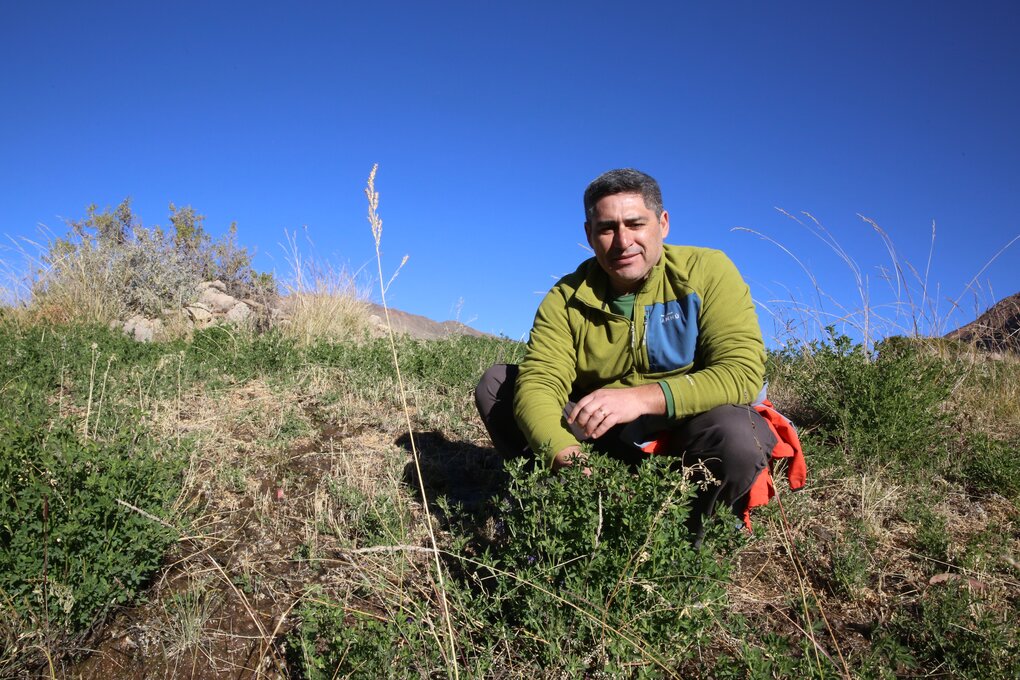
INIA Chile's Luis Inostroza, lead researcher in the development of the Kauke alfalfa variety.
The development of Kauke is ushering in a new era of crop self-sufficiency in Chile. With the birth of the alfalfa genetic improvement program, the focus is now on sustainability, food security and food sovereignty.
This means Chile can produce its own seed, instead of importing it at prices that smallholders often can’t afford. INIA estimates that national seed production could be at least 30 percent cheaper than imports.
With the help of seed companies, Chile could soon grow its own alfalfa seeds to benefit the smallholders of the Central Valley.
“The success story of Kauke underlines the crucial role that genetic diversity plays for all humanity,” says Benjamin Kilian, who coordinated the CWR Project.
“Working with crop diversity takes time and funding, as well as researchers who are willing to wrestle with wild relatives for everyone’s benefit. It is rewarding to see these pre-breeding efforts having a real impact on farmers’ livelihoods in Chile.”
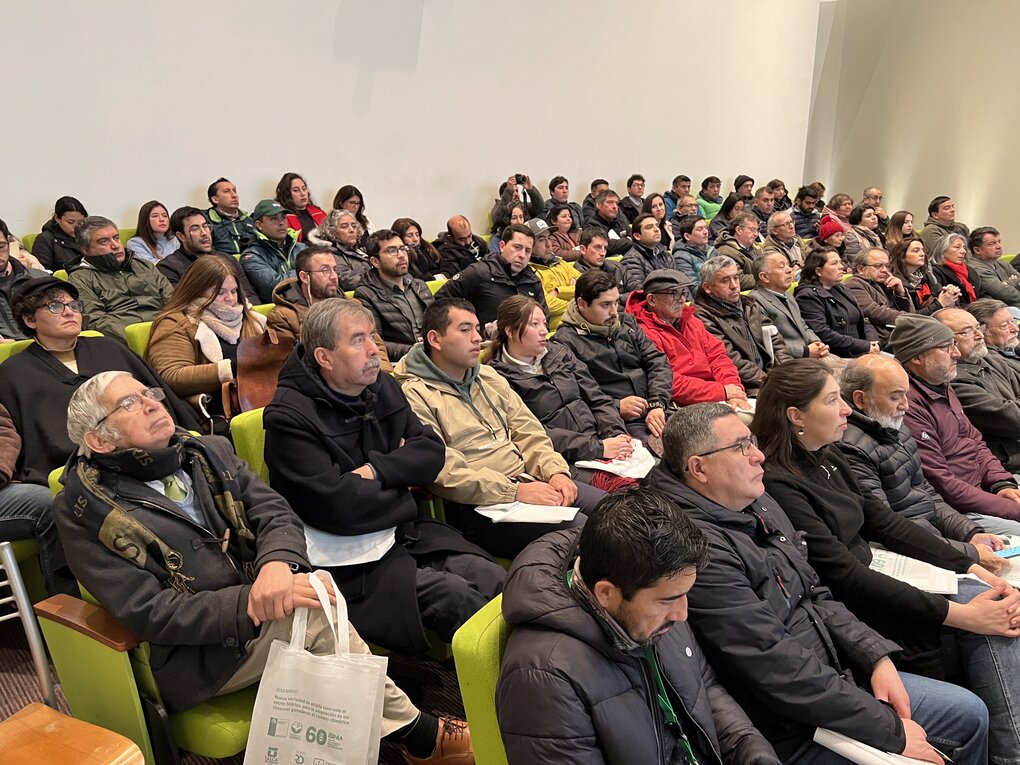
Researchers, farmers and seed company representatives attended the launch of Kauke at the Universidad of Talca, Chile.
Postscript
Today, Benjamin Kilian leads BOLD (Biodiversity for Opportunities, Livelihoods and Development), a 10-year global project to strengthen food and nutrition security worldwide by supporting the conservation and use of crop diversity. Under BOLD, Alan Humphries continues his exploration of alfalfa diversity, using alfalfa wild relatives to improve the climate adaptation of the crop. He presently collaborates with national research institutes in Kazakhstan, Kyrgyzstan and Zambia. INIA Chile, though not a BOLD partner, continues to be a strategic collaborator.
“These projects sometimes start as a foreign aid concept – we're in Australia helping out developing nations, but it soon becomes apparent that this is a two-way interaction,” Humphries says. “I've learned so much from INIA’s researchers and experts. And soon, Chilean researchers will be providing training to students in Kazakhstan and Kyrgyzstan and potentially other Crop Trust BOLD pre-breeding partners. That's Chile giving back.”
Categories: For The Press, For Partners, For Policymakers, BOLD, Crop Wild Relatives, Alfalfa, Climate Change, Sustainable Agriculture

